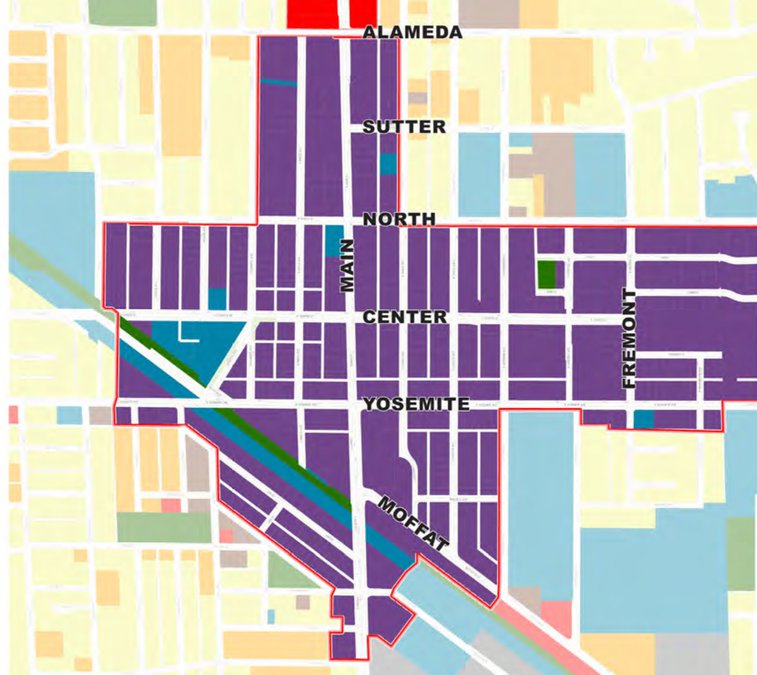The desire for a downtown that runs the gamut from trendy restaurants, night life, boutique shopping, and being a gathering place for a growing community will require a higher concentration of residents at Manteca’s heart.
It is why the proposed preferred land use for the general plan update includes a major departure from previous general plans that serve as the blueprint for growth. The citizens’ advisory committee that has helped shape the update is recommending the creation of a new downtown zone while more than doubling the area that city identifies as being part of downtown to help make the transition possible.
The preferred land use plan is being reviewed by the Manteca Planning Commission when they meet Tuesday at 7 p.m. at the Civic Center, 1001 W. Center St.
The idea is to increase residential development that is crucial to providing a core population within walking distance considered essential to attract and support additional retail, restaurant, and services.
New development that could replace existing homes in the expanded area as well as some commercial buildings would be allowed to have second floor condos and lofts above stores as well as apartment complexes.
It is the same strategy used to create Santana Row in San Jose. Cambay Group is also employing the same approach in their bid to create a vibrant town square that will serve as the main commercial area for the 11,000-home River Islands at Lathrop planned community. Poag Development — the owners of The Promenade Shops at Orchard Valley that’s anchored by Bass Pro — is using to transform their commercial endeavor at the 120 Bypass and Union Road. In both the case of River Islands and Orchard Valley they are shooting for a population of roughly 1,500 within walking distance that has successfully led to bustling “city center” or downtown revivals elsewhere.
The downtown zoning basically takes the mixed use development approach to the next level to essentially remake downtown by going up.
Manteca currently has 81,450 residents. Based on current growth, the city could easily have 100,000 residents by 2030 making investment by the private sector in downtown more appealing especially if they can cover costs associated with buying properties and trying to cobble together large enough parcels for development as well as the demolition and the actual construction.
The western boundary of downtown would be Elm Avenue, Goodale Court, and the Manteca Historical Museum on West Yosemite Avenue.
The eastern boundary would be Sheridan Avenue north of Yosemite Avenue and Manteca High south of Yosemite Avenue.
The northern boundary would be North Street west of Lincoln Avenue and North Street east of Sycamore Avenue as well as Alameda Street between Sycamore and Lincoln avenues.
The southern boundary would be Stockton Street west of Main Street and the railroad tracks across from Sherman Avenue east of Main Street.
Also included would be parcels fronting East Yosemite between Manteca High and Lincoln School as well as parcels fronting South Main as far south as Lupton Avenue.
To contact Dennis Wyatt, email dwyatt@mantecabulletin.com






